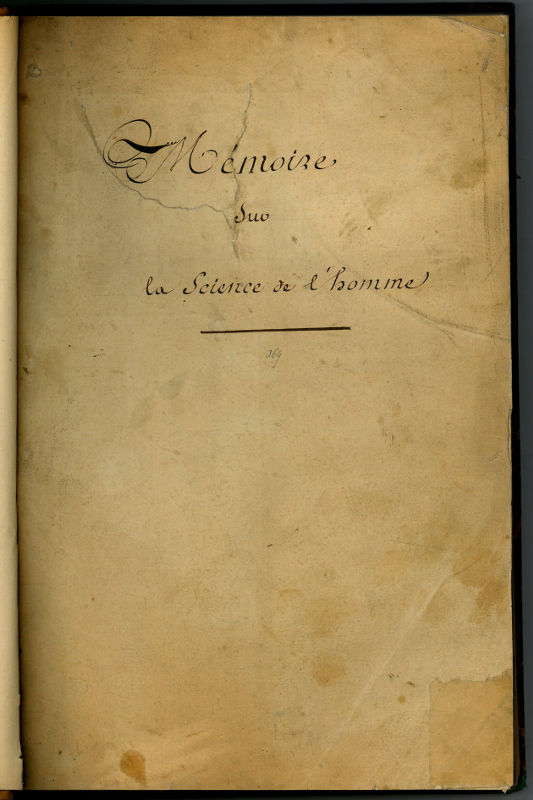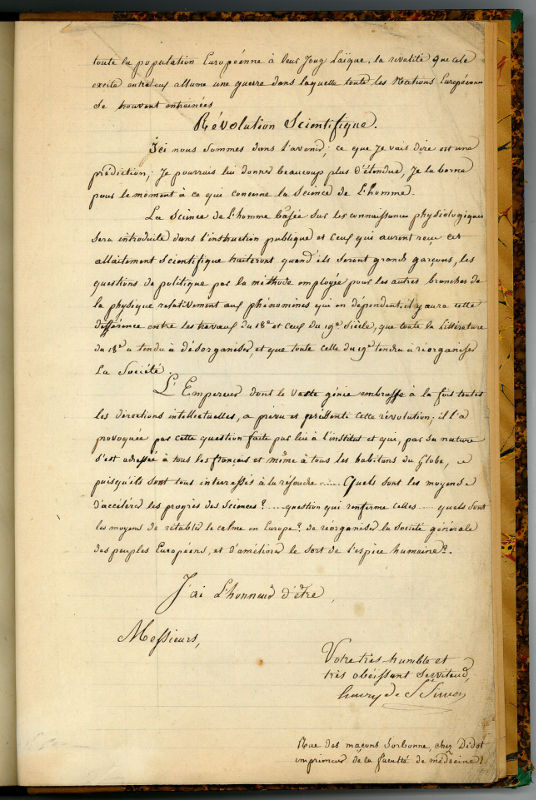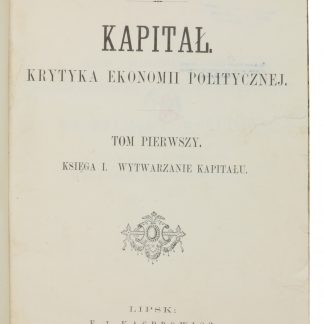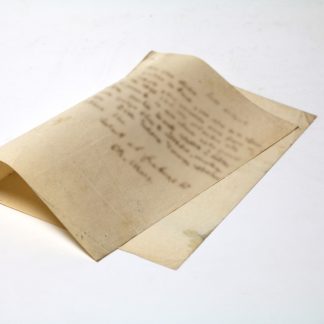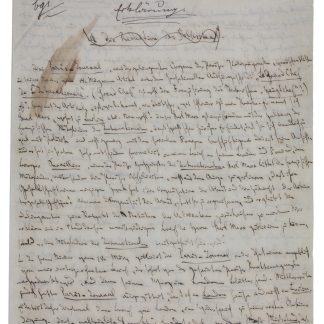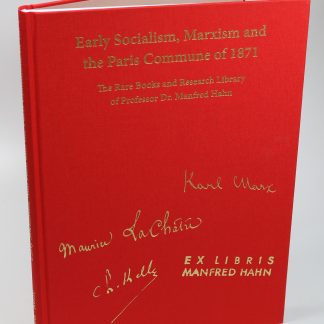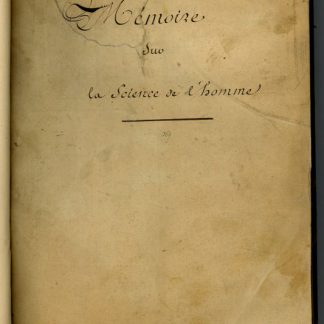"Mémoire sur la Science de l’homme". Manuscript signed ("Henry de St Simon").
Small folio (212 x 316 mm). Manuscript on paper. 140 ff. Contemporary half calf with giltstamped spine labels. Marbled endpapers.
€ 35,000.00
A very rare manuscript copy of this work which its author had not intended for publication (or could not afford to have printed). Fournel, in his "Bibliographie Saint-Simonienne", placed the total number of such manuscript copies prepared at 60 (erroneously giving a date of 1811). The text was first printed in 1858 in a collection with the "Physiologie religieuse d’Enfantin" (Paris & Leipzig, Masson), and then again in the following year within Volume II of the "Œuvres choisies", with a list of some 30 known recipients of the original "Mémoire".
This work was planned as part of a series of studies based on the work of Vicq d'Azyr, Cabanis, Bichat, and Condorcet, the four scholars who had supposedly done most to study the human mind. The author proposes that his "Mémoire" be copied and criticized before being presented to the learned societies. It is an attempt to develop a positive social science which would study man as a species rather than as an individual; physiology would thus be elevated to the rank of the natural sciences. Saint-Simon believed that society could be understood by examining its underlying natural laws, the resulting social science would supposedly be capable of constructing a perfect society. His arguments for the scientific organization of society have been seen as "the first example of pure socialism [...] understood as an economic system in which production is entirely carried on in common and the fruits of labour distributed according to some ideal standard" (R. T. Ely).
Bookplate of the anthropologist and ethnographer Ernest Théodore Hamy (1842-1908), founder of the Musée d’Ethnographie du Trocadéro. Some repairs to the first two leaves, otherwise a very well preserved specimen.
Mazzone 29. Walch p. 28 (listing MS 578 at the Museum d'Histoire Naturelle) and no. 82 (mentioning copies in the Bibliothèque de l'Arsenal and the Bibliothèque Thiers). Fournel p. 13 (misdated "1811"). Dolléans & Crozier 6. Stammhammer I, 214, 53. Booth p. 24-30.

